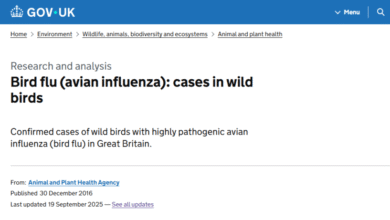 Dominic Woodfield is the Managing Director of Bioscan, a long established and well-respected consultancy specialising in applied ecology.
Dominic Woodfield is the Managing Director of Bioscan, a long established and well-respected consultancy specialising in applied ecology.
He is a life-long birder, a specialist in botany, habitat restoration and creation and in protected fauna including bats, herpetofauna and other species. He is also a highly experienced practitioner in Environmental Impact Assessment and Habitats Regulations Assessment. Most of his work is for the development sector, but he has also undertaken commissions for Natural England, the RSPB, Wildlife Trusts and campaign groups. He once mounted an independent legal challenge in defence of an important site for butterflies in Bicester, Oxfordshire, which resulted in planning permission for a five-hundred unit housing development being overturned. He lives in Oxford with his partner and family.
After around a decade in gestation, and with some significant hiccups and bumps in the road even since the primary legislation that forms its foundation stone was passed in 2021, Biodiversity Net Gain (“BNG”) is, as of 12th February 2024, finally and fully ‘here’.
For those still not quite sure what it is, BNG is the Government’s answer to making development (defined for this purpose as a land-use change requiring formal planning consent) play its part in arresting biodiversity decline. More broadly, it is one of the Government’s various mechanisms intended to achieve ‘sustainable development’ – i.e. ensuring the natural environment is left in a better place for future generations than ours has found it.
BNG works by imposing a standing (mandatory) requirement for all developments (with a few defined exceptions) to not just fully compensate for habitat losses (a principle that has arguably been enshrined in national planning policy since 2012) but to go further and deliver a 10% overall uplift in biodiversity value. Inevitably, a precise figure such as 10% requires that the biodiversity value of an area of land before and after development be quantified and counted, and this is where BNG begins to polarise opinion. How can you quantify biodiversity value? Should you even try? Is it morally bankrupt to reduce our stewardship of the natural world to numbers on a balance sheet? Do we diminish nature, and ourselves, by so doing? Those are valid and important questions, but they have not stopped BNG becoming a mainstream part of development management and policy.
The way the statutory BNG system measures biodiversity loss and gain is by a collection of simple (even simplistic) arithmetic formulae collectively known as ‘The Biodiversity Metric’ (see here). Now on its umpteenth iteration, the Metric remains essentially a system based around attributing numerical values to intrinsic habitat quality (a function of factors such as rarity and fragility – here termed ‘distinctiveness’) qualified by the more obviously self-explanatory variable of ‘condition’. Thus, a high value habitat such as lowland heathland will be high scoring on ‘distinctiveness’ but its total score potentially suppressed if it is neglected and in ‘poor’ condition. Getting it into ‘good’ condition provides an enhancement opportunity that can be quantified, and that quantity then monetised as credits or units which can be bought by a developer who cannot achieve net gain on their development site.
Although called the ‘Biodiversity’ metric, the system only deals with habitats. It pays no heed to individual flora or fauna (at least terrestrial fauna, as opposed to biota that are prescriptive of certain intertidal habitat types). Habitat quality and condition is instead used as a proxy for biodiversity value generally. The potential pitfalls of this approach are not hard to spot – take species-poor grasslands or beet fields essential for the survival of wintering pink-footed geese or whooper swans for example, or a scrappy strip of bramble like any other, but which is home to dormice. The rationale for this simplistic approach, at least originally, was a sense that for the system to work and be adopted, it must be easy to use and accessible – including by non-experts. Those faced with the current spreadsheet version of the Metric calculator tool for the first time may wonder whether it has fallen between two stools in this respect.
Having now become unavoidable, BNG is exercising the minds of developers, local authorities and landowners throughout England (there’s no mandatory equivalent in Wales and Scotland as yet). A nascent market bubble is slowly ballooning, as developers realise that the Metric may not allow them to get away with the traditional approach of a few trees and a balancing pond at the edge of their housing or warehousing development, but requires something more. Local Authorities are increasingly facing requests from developers to offer up or suggest places where such deficits can be met, and they are also waking up to the fact that they are not exempt themselves and that sites on their own land portfolios are also bitten by the 10% gain requirement. At the same time, farmers and other landowners are realising that BNG represents a new and potentially lucrative source of income for land of marginal agricultural value (and even of land that is suitable and profitable for food-growing: another source for potential controversy around food security concerns).
The transformation of BNG from concept to mandatory reality has sparked renewed debate about the rights and wrongs of using a simplified metric system to measure biodiversity gain and loss, about whether BNG provides a ‘licence to trash’ high value habitats, about how easily the system can be gamed or fiddled, and around whether it has any genuine prospect of slowing the seemingly inexorable cycle of UK biodiversity decline. I have weighed into this debate on occasion over the last ten years or so, and have not been slow to criticise the Metric-based approach, nor the motives of some of those who have most enthusiastically promoted it (Woodfield 2013, Woodfield 2018). However, in 2022 I agreed to put on a second hat alongside my consultant ecologist’s one, and became a non-executive Director of a company specifically set up to service those needing BNG solutions. Why?
I could rationalise this apparent volte face with a treatise along the lines of ‘it’s here, I might as well try and make sure it’s as good as it can be’. But I am not writing this piece to seek redemption or acceptance from peers. This is not a holy confession. It is, rather, a call to all involved in land-use and land-use planning to grasp the opportunity that BNG – for all its flaws – genuinely offers to do things better.
Much of my public and professional ire about the system in the past has been due to the ease with which I have seen it abused by unscrupulous developers and consultants, and the failure of such abuse to be spotted, arrested and called-out by those in a position to do so. Quite simply, BNG will fail if that is allowed to continue and to become the norm. There are already grounds for concern that this is the way things are slipping. With my ecological consultancy hat back on, I am increasingly being called upon to independently review other consultants’ BNG assessments and the calculations that flow from them. I would estimate the proportion of assessments that I would class as accurate, broadly accurate or adequately representative to be less than 10%, perhaps less than 5%. The errors I find are not trivial – they have real-world consequences for biodiversity. It is a notable feature of my experiences that it is almost unknown for an error to be in the favour of biodiversity. In practically every case the error is an under-estimate of a development site’s value – sometimes a gross under-estimate – or a wildly optimistic and at times scientifically nonsensical or even risible positive assessment of the success of compensatory habitat creation. Very often, it is both.
But, to return to my main theme here, this is not (entirely) the fault of the Metric, as lumpen and flawed a tool as it is, nor is it the fault of the principles and objectives behind it. BNG can still be a force for good – a step change to deliver better outcomes from development, but it cannot be stressed enough that for it to realise its latent potential will require vigilance, professionalism and close scrutiny. So, what can those who deal with BNG, whether daily or occasionally, do to ensure it becomes a force for good, not ill? Well, we might start with the following:
- LPAs need to be sufficiently resourced (with appropriately trained and experienced ecological staff) and empowered to conduct the independent reviews necessary to discourage ‘gaming’ of the system, or – worse – even outright figure fiddling. This means staff. This means money. If this is not going to come from Central Government any time soon, I suggest a % levy on application fees should be explored.
- It is important, even essential, that those completing BNG Metrics for developers, landowners or LPAs have been to the site, and are sufficiently competent to be able to classify and assess the baseline condition of the relevant habitats to a high degree of accuracy. In a recent major infrastructure case I was involved in scrutinising, it was clear that the Metric calculation had been put together by desk-based minions with scant ecological knowledge attempting to interpret field data collected by a party that had since departed the organisation.
- The provisions within the Metric guidance put in to prevent sites being trashed – subtly or more overtly – in order to deliver a lower baseline need to be a) enforceable and b) enforced.
- I and many others are of the opinion that the Metric needs significant revision to encapsulate more realistic timescales for the delivery of certain high value habitats, such as good condition Lowland Meadow. The defaults given – as little as 15 years – are entirely at odds with the weight of scientific research in this area.
- On a related point, any habitat creation and enhancement objectives that stray beyond ‘high ambition’ and into the realms of fantasy – in order to deliver a positive score – need to be questioned and where appropriate tempered through challenge. It’s quite simple really – if there are no clearly documented and scientifically robust precedents for habitat X being delivered to condition Y within timescale Z then it shouldn’t be taken as something that’s going to happen, and should carry no weight in planning judgments. You are simply not going to get a species-rich semi-natural grassland on improved soils in the space of a few years by chucking on a proprietary seed mix and rewarding people for making throwaway comments to that effect has to stop.
- In due course, I believe the Metric really has to be revised to take into some sort of account species interest. At the moment this is a major hole in its ability to deliver net gain even where the will is there. A simple multiplier to account for an ostensibly low value habitat supporting an important species – something that happens surprisingly often – will do much to combat the current very high risk of on-paper Metric outputs masking what will in reality prove to be significant biodiversity loss.
There you go – a six-point plan for making the best of what the Biodiversity Metric and mandatory 10% Biodiversity Net Gain presents us with as an opportunity. Six points that are merely a starter for ten – there’s bound to be lots of others, even before we get into the debates around BNG as a driver for taking land out of agricultural production and risking our food security, or the ethical reductionism of giving wildlife a ‘score’. But BNG is here and here now, for better or worse, and in the absence of anything better, who wouldn’t want it to work?
References:
Woodfield, D.M.G (2013) Biodiversity offsetting – setting off on the wrong foot? British Wildlife 25.1 October 2013.
Woodfield D.M.G (2018) ‘Biodiversity Accounting’ – a tool for transparency or for dumbing down? British Wildlife 30.2 December 2018.
[registration_form]Source link




